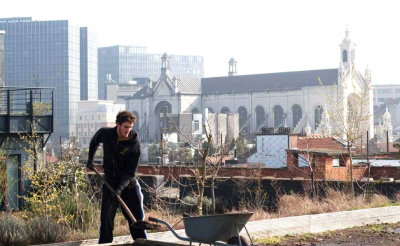As media-artist and beekeeper I am studying since 2009 the co-evolution between city honeybees and urban ecosystems. In many industrialised nations the bee colonies are threatened, often because of the state of ecology in the bees’ foraging areas. It is remarkable to see how a bee population functions and evolves very much in accordance to the human activities we are developing around them: gardening and urban agriculture. The production of honey is different related to the flowers we grow, the plants we like, the garbage or pollution we produce. Bees are sensitive bio-indicators and they are very responsive to the different biotopes that we share.
In order to research the optimal conditions for survival of the honey bees I have set out several urban test fields -populated with beehives- in the Brussels’ Canal Zone. This area generates diverse activities, from community gardening and urban agriculture to accidental nature, this all developed between industrial buildings, office zones and living areas. The test sites are connected by the flight routes and foraging fields of the bees. Together they shape a green corridor through the city.
The Urban Farm, Brussels’ first rooftop farm, is one of my open-air laboratories. It is built on a set of connected rooftops in the historical center of Brussels, on the same spot where in medieval times vegetable and fish markets were set up, among houses and cloister gardens. The farm, built on top of a big parking lot, is a place where artists and urban gardeners develop new strategies for sustainable living in the city. An artistic attitude, green technology and the philosophy of permaculture present new opportunities to contribute to sustainable living.


The Urban Artfarm is a rooftop laboratory overlooking Brussels’ city center. It consists of an edible forest garden, an apiary and a vegetable garden run by a local community. The total surface is 700m2.
The project is self sufficient in terms of rainwater and solar energy for powering the sensors.

The pollen the bees bring back from their foraging flights are analyzed with the Scanning Electron Microscope (SEM). Above a Cucurbita pepa pollen grain (zucchini) magnified 1150x.
The Flightroutes#2 (urban farm) was presented
– as part of the Foraging Fields installation in the exhibition FIELDS, Riga – Latvia, from 15 may 2014 to august 4 2014.
